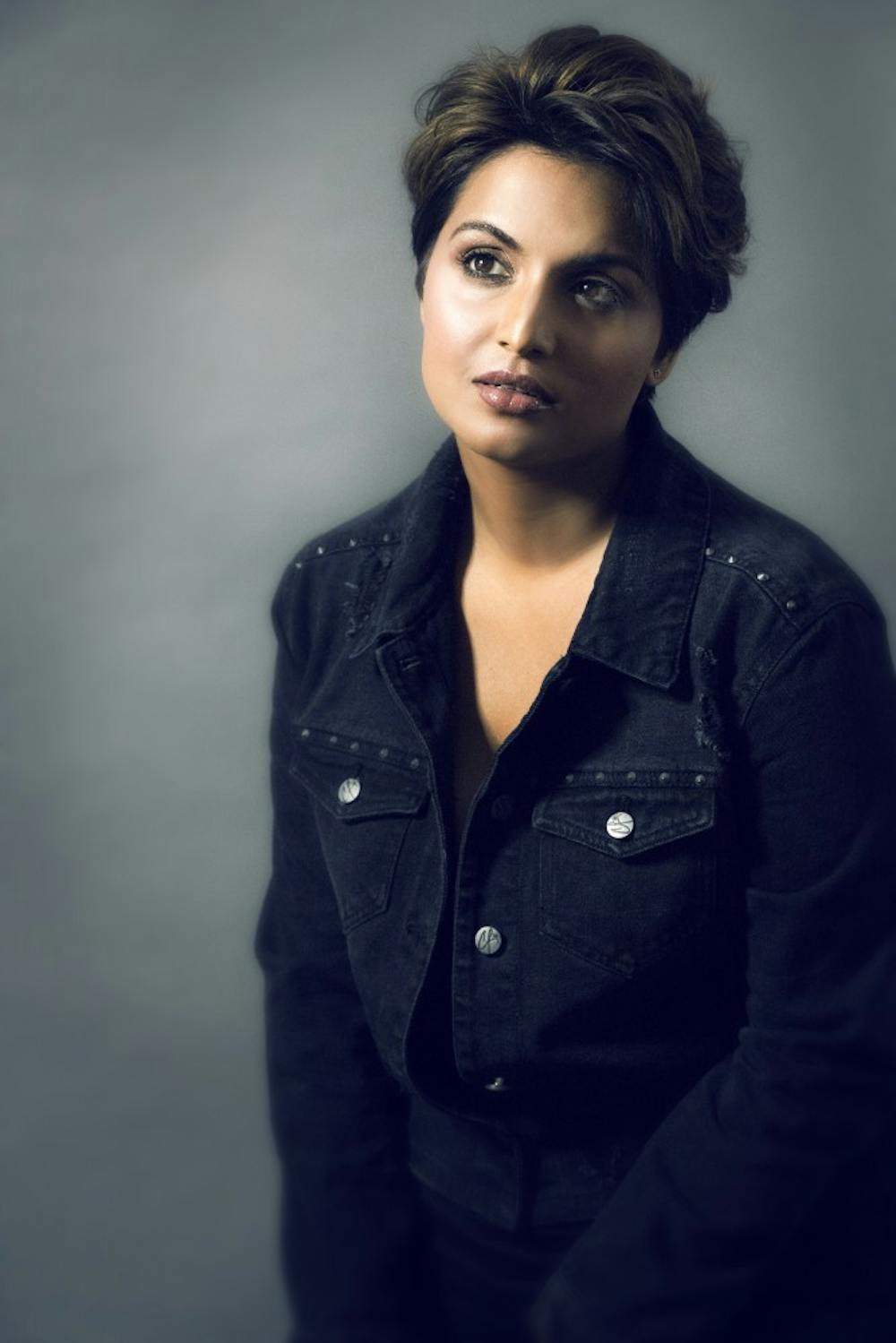Priyanka Shetty is no stranger to adversity, whether that comes in the form of working against the tide of the patriarchal society in her hometown of Bangalore, India or the racial injustice she has faced during her transition to life in the United States. On Sunday night, Shetty gave an in-depth look into her journey from her blossoming theater work in India to her study here at the University. The play, “The Elephant in the Room,” which is part of a triptych with “#Charlottesville” and “The Wall,” will be on the road soon, but you can catch it at Live Arts, on the Downtown Mall April 23.
Shetty is in her final year of her MFA in Acting at the University, and “The Elephant in the Room” is one of her culminating projects. It picks out the particular moments that pushed her to seek not only a different career — moving from software engineering to acting — but a different home to pursue that path. Shetty commented on the fact that coming from India, where she ran her own theater company and was the director of a program called “What’s the Scene”— a music review project aimed at shedding more light on independent artists — she has always been very comfortable wearing different hats and advocating for herself.
“I noticed that whenever there’s a need for something, I feel the urge to fill it . . . I like to take on the entire weight of the world onto my shoulders a little bit,” Shetty said.
Like Shetty, “The Elephant in the Room” is not to be limited to one way of doing things, taking the form of a play-within-a-play. It’s set in a dressing room an hour before the “play” starts, and Shetty calls on random scene numbers labeled by tarot card titles in order to decide which momentous scenes from her life arrive first for the crowd. The interactions could be anything from an emotional conversation about childhood with the protagonist, Priyanka’s brother, or moments of honesty about being an international student at the University. At one point, Shetty’s character describes attending the University as being a “small drop, but a drop that carries the might of the ocean,” among a sea of students and white faces, desiring to see the “bones of this university.” As for where the show can go next, Shetty is excited to see a future on the road, as well as the day when she can pass the character version of herself on to another actor and open opportunities for women of color in the theater world.
“I certainly wanted to see change, but I had to come to terms with the fact that it’s not going to happen at the pace that I want it to happen,” said Shetty. “And it’s been going on for so long and at some point I was like, okay, change is slow and maybe instead of just sitting around waiting for things to change, maybe I should be the one who brings about that change — for myself and for others ... Beyond a point, the playwright or whoever the person is playing the character gives up ... someone else takes over. So in a way, I have also created a role for someone else.”
The show is full of candid and sarcastic remarks about “first world problems,” the true definition of “vulnerability,” the nature of stereotyping Indian characters in media and whether or not you have to sound breathy when discussing yoga practices.
On the concept of true vulnerability, Shetty considers the theater the “best medium to share your own story” because for “one or two hours people are really receptive, and they can leave with some questions ... rather than just having a conversation where people can cut you off.” The deeply personal levels that Shetty reaches in “The Elephant in the Room” never feel disingenuous. It is clear that she is displaying some of the darkest moments of her past as well as some of the most hopeful — without having it be unrelatable. The play opens interacting with everyone in the audience and progressively gets more compact and darker, playing with the idea of public solitude in order to be within oneself and still participating with the audience.
“The Elephant in the Room” is meant to make you laugh, cry and leave having learned something important. When asked about what the most important takeaway from the show could be to an audience member, Shetty said, “to be able to view America through the lens of an Indian woman or an international student … learning on both sides ... People will learn to probably look at their perspective of what they consider normal every day and maybe question that.”
As for her experience transitioning from India to the United States, there were certainly some letdowns. “I feel like I am not able to explore my roots at all here,” Shetty said. “One of the things I thought people here would really make use of … a person with access to a completely different culture … I know an Indian classical dance called Kathak, and … Hindustani music and all those things which didn’t really make their way — like I speak four different languages and that was never really channeled.”
So, if people in the industry are not going to take advantage of what she has to offer, “I have to do that for myself,” said Shetty.
And her advice for other writers and artists? “If you think you have a story to share, that makes you a writer.” Surely, Priyanka Shetty will share many more incredible stories in the future.
Shetty will be returning to perform her triptych, including “The Elephant in the Room” at Live Arts April 23.





